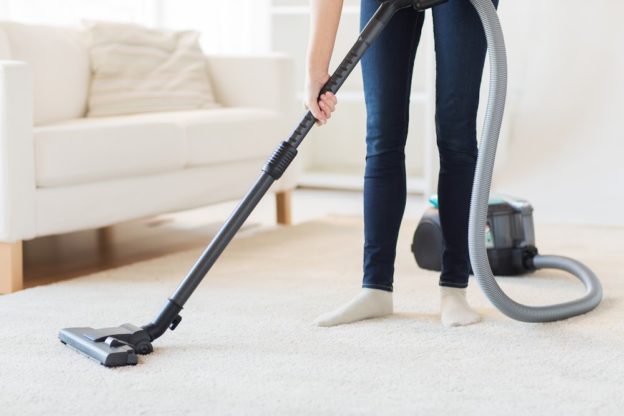

What to Look for in a Carpet Vacuum
If you suffer from allergies, the carpets in your home can quickly turn from a warm source of comfort into a harmful source of allergens from dust, pet dander, pollen and more. One of the best ways to keep your carpet free from the pollutants that make you sneeze is to vacuum it regularly. However, to remove allergens from your carpet thoroughly and efficiently, you’ll need a vacuum that’s up to the task.
Here are three features you should look for in a new anti-allergy vacuum cleaner.
High Suction Power
Without a doubt, one of the most important things to look for in an allergy-preventing vacuum cleaner is high suction power. Without strong suction, a vacuum will struggle to pick up sources of allergens like dander and pet hair.
In many cases, upright vacuums and cylinder vacuums have the strongest suction. Since they get their power from mains electricity, they can keep up a high level of suction for the duration of their use, clearing away all allergens efficiently.
Of course, cordless vacuums offer many benefits too. Their lightweight, convenient nature makes them easy to use every day and get into small spaces, which can help you remove allergens more often. However, the downside is that they don’t always have the best suction.
If you are going to buy a cordless vacuum, make sure you get one with a high-quality, high-capacity lithium battery to ensure its suction power lasts long enough.
A HEPA Filter
HEPA stands for High Efficiency Particulate Air. As this name suggests, these filters work by forcing air through your vacuum cleaner into a fine, fiberglass mesh that traps allergen particles.
You may have noticed that vacuum cleaners expel the air they suck up. In a normal vacuum cleaner, these air emissions often contain the very allergens you were trying to get rid of, releasing them back into your home. Using a HEPA filter ensures that the particles you vacuum up stay vacuumed, getting rid of dander, pollen and other allergens for good.
When selecting a HEPA filter vacuum, note that not all filters are made equally. Look at the specifications of the machine before you make your decision. In particular, pay attention to the certified efficiency. Most HEPA filters will remove 99.97 percent of particles 0.3 microns in size, but a filter which has 99.99 percent efficiency is even better.
A Secure Seal
Last but not least, your anti-allergy vacuum cleaner needs to have a secure seal. As explained, the purpose of a HEPA filter is to prevent allergen microbes from being expelled back out of your vacuum. However, this only works if the unit has a strong and secure seal. Without proper sealing, allergens can still bypass the HEPA filter and get blown back out of the vacuum cleaner.
As such, when reading the specifications, look out for something like anti-allergen seal or sealed technology. Note that the best vacuum cleaners for allergy-sufferers also use self-sealing bags rather than sealed chambers. That’s because emptying a chamber can release dust and allergens back into the atmosphere.
If you use a bagless vacuum, always try to empty it into your outdoor bin to keep allergen particles out of your home.
A good allergy-preventing vacuum cleaner will go a long way in keeping your home fresh and liveable on a day-to-day basis in-between regular cleanings.
When it is time for your next professional carpet cleaning, opt for Chem-Dry. Chem-Dry cleaning uses non-toxic, deep cleaning technology to pull dirt and allergen particles from your carpet, and it doesn’t leave behind any residue that will trap more dust. For qualified, insured, experienced Chem-Dry cleaning, book with Davali Chem-Dry.


